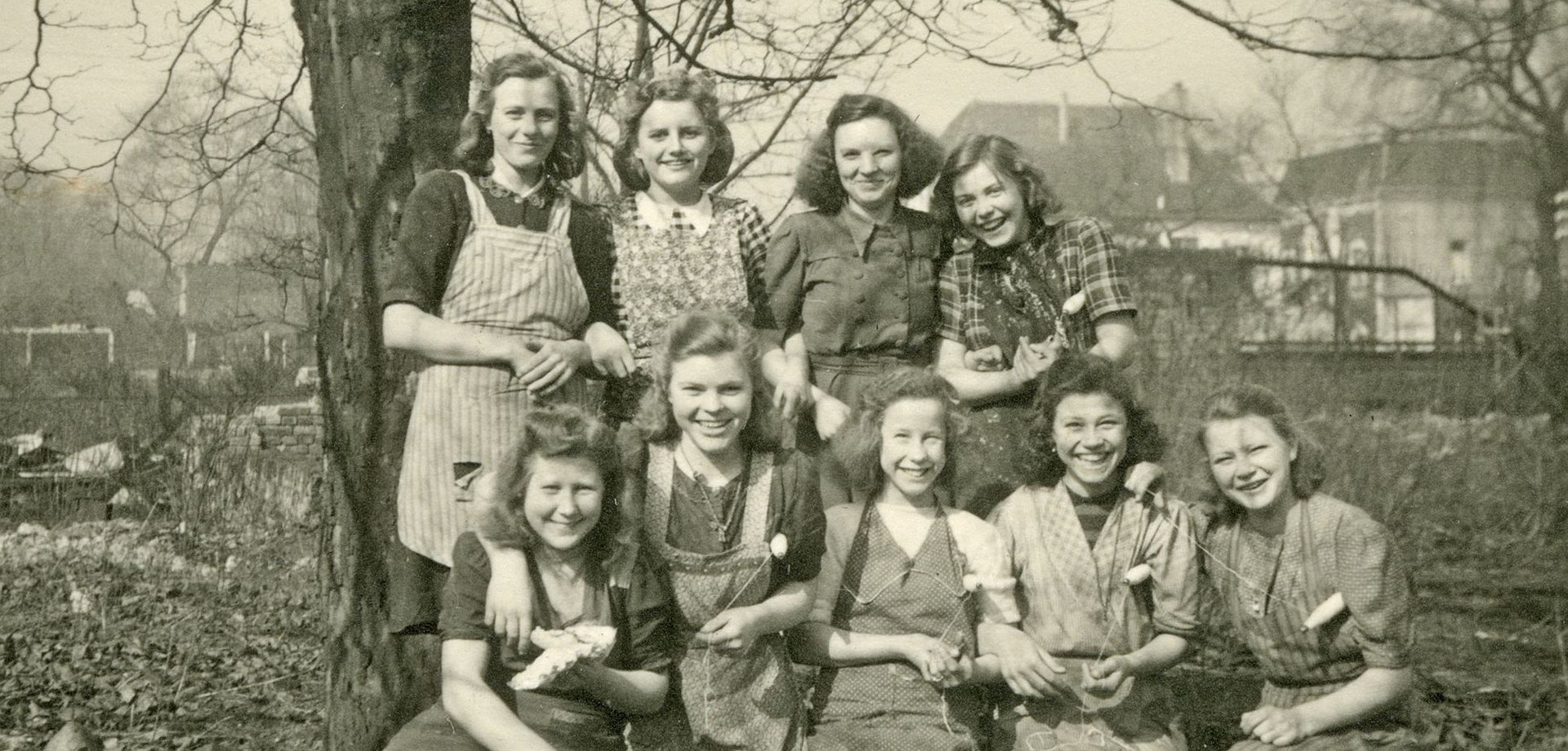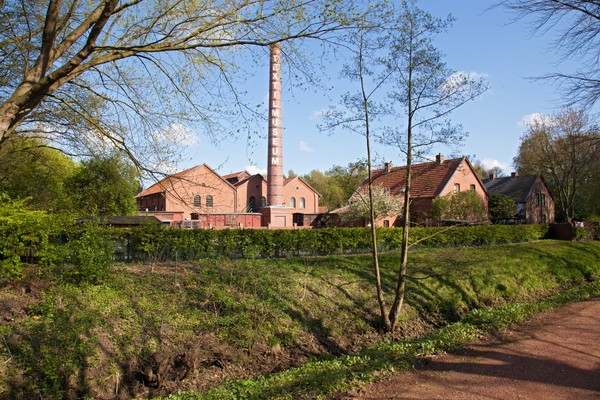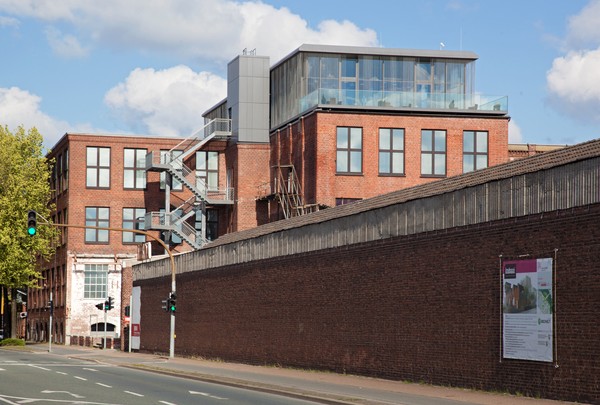
History
The textile factory in Bocholt consists of two locations within sight of each other on the left and right banks of the River Aa: a replica of a weaving mill typical of the region and the historic Herding spinning mill.
Spinning and weaving cotton has a long tradition in Bocholt. For over 450 years, this fibre, which has to be imported from overseas, shaped the economic life of Bocholt and the entire region. The industry boomed particularly between 1870 and the First World War: Bocholt had up to 80 textile companies, which at times employed up to 10,000 people. In the mid-1960s, the structural crisis also began in Westmünsterland. It is characterised by a continuing process of decline due to increasing competition from the Far East. Many companies closed and thousands of people lost their jobs.
Weaving mill as a museum factory
In the midst of the structural crisis, the LWL Regional Assembly decided in 1984 to establish a textile museum. Because no historic building was available at the time, it was initially decided to construct a replica of a typical weaving mill from the turn of the century. The opening was celebrated on the banks of the River Aa in 1989.
In 2004, the Regional Association of Westphalia-Lippe purchased the four-storey brick building of the Herding spinning mill as the second part of its textile museum. This was achieved with financial support from the state, the district of Borken, the city of Bocholt and the Stadtsparkasse Bocholt. Renovation work began in 2009 with funds from the second economic stimulus package. Since the spinning mill opened in September 2011, the textile museum and its two locations have been operating under the name ‘Textilwerk Bocholt’.
History of Spinn-Web Herding
The Herding spinning and weaving mill is a typical example of the boom period of the textile industry in Bocholt: a hand weaving mill was the nucleus of what was at times one of the largest textile companies in the city, founded in 1870 by Heinrich Schüring and his brother-in-law Max Herding.
When high yarn prices after 1900 made it worthwhile to build up his own spinning capacity, Max Herding Jr. decided to build a spinning mill next to the existing weaving mill. He chose the architectural firm Sequin & Knobel in Rüti near Zurich for the project.
The façade of the four-storey building from 1907, with its impressive water tower, faced the city centre and heralded the new, up-and-coming company:
With almost 600 looms and 23,600 spindles, Herding's ‘Spinnweb’ was one of the largest textile companies in Bocholt for a long time.
In 1943, the part facing the street, including the water tower, was destroyed in an air raid. Reconstruction took place in 1949/50 in simple forms and without the tower.
The crisis began in the early 1960s. As a worsted spinning and weaving mill, production was able to be maintained in reduced form under new owners until 1973. Then all the halls were cleared, the machines were sold and scrapped, and the space was rented out as storage space.
Traces of work and modern use
The conversion into a museum and cultural forum began in 2004 under the direction of the renowned Stuttgart-based architectural firm ATELIER BRÜCKNER. The aim was to clearly show the traces of the building's work and 100-year history. On all four floors, a ‘dialogue’ develops between current use and historical features: peeling layers of paint and worn concrete floors were deliberately left in place and contrasted with modern fixtures, most notably the red steel staircase that was installed in the 20-metre-high rope walk, along with clear cubes for the shop and service areas and the restaurant on the roof.
The new bistro with roof terrace is literally a highlight of the renovation. At night, the illuminated glass cube can be seen from afar. From this lofty height, visitors can enjoy a breathtaking view of the entire city. Steel rods in front of the glass façade suggest textile structures, while shed roofs as skylights are a reference to the factory architecture of the immediate surroundings.




